How to get data from old or damaged USB
USBs are one of the most useful technologies out there, but they also cause quite a few problems. There is nothing more frustrating than plugging in a USB with important data and discovering that your data has been lost due to an unknown problem.
Fortunately, most USB problems can be resolved without causing data loss. All you need is a little patience and technical know-how.
How to troubleshoot USB hardware
The first part is for the computer to detect your USB. If the PC can't see the drive, there's nothing else you can do.
Check if the USB fits the port
One of the first things you should do when you have problems with your USB drives is to make sure they fit into the USB port on your computer. Circuit contacts that do not make full contact with the USB port are often the cause of problems. USB port problems can cause many problems, like random disconnections, slow transfer speeds, and accidental file loss.
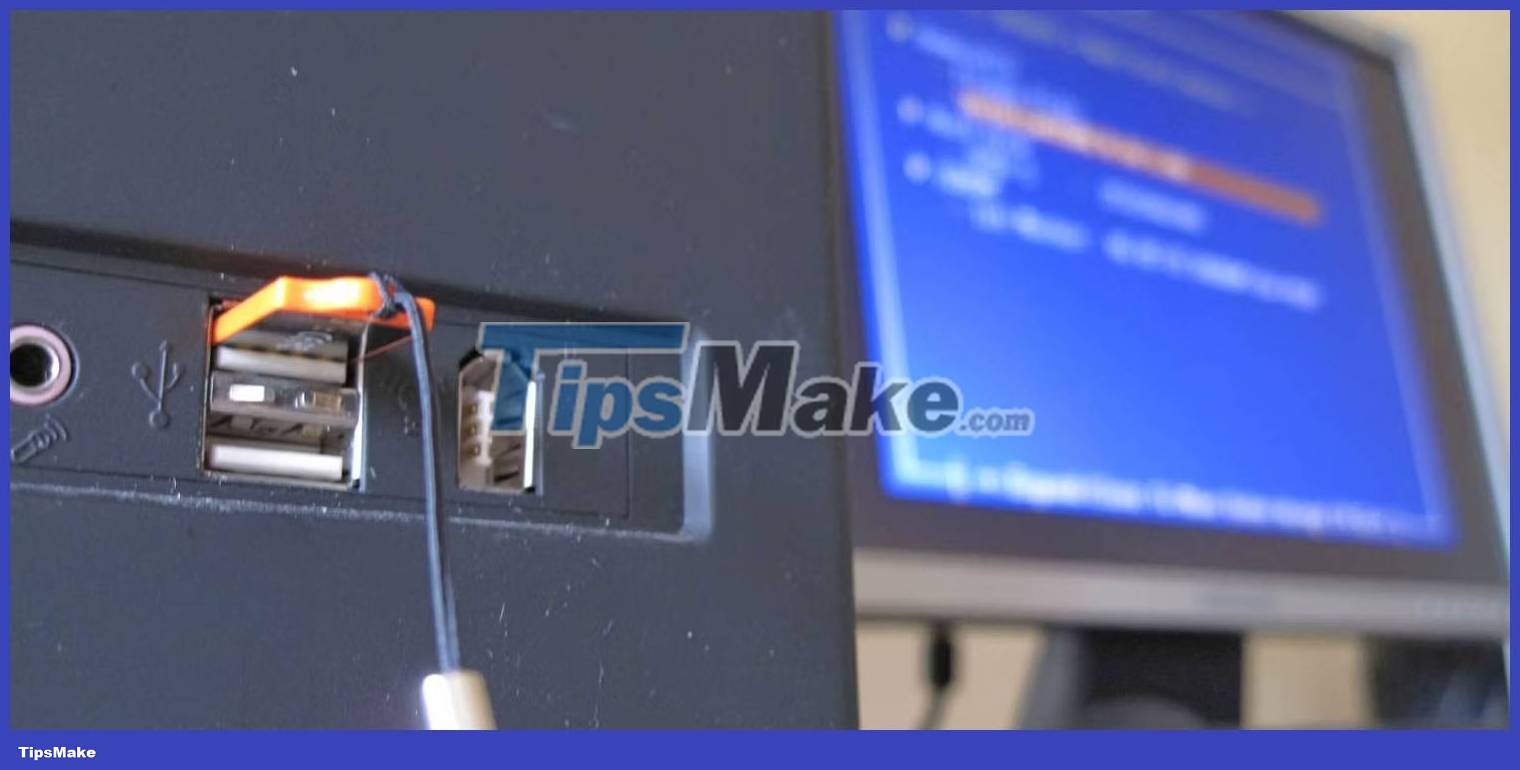
Shake your USB gently to make sure it fits into the USB port. In some cases, you may even have to hold the drive at a certain angle for it to connect to the port properly and access data. If so, back up your drive ASAP!
Make sure the pins and cover are intact
Check that the USB pins and the outer case are intact. If the pins have worn out or the case is so bent that the USB port cannot be inserted, that is the cause of the problem.
Glance inside the port of the drive to check for any dust and debris that might be obstructing the connection and brush them off (don't blow into the port, that will make the problem worse) and fix any bends with pliers.
Try checking the USB port
Another potential fault point here is the PC's USB port itself. Similar to a USB port on a drive, if there is dust and debris inside the PC's USB port, or any of the pins are bent, they won't come into contact with the USB internal pins, rendering the device useless.
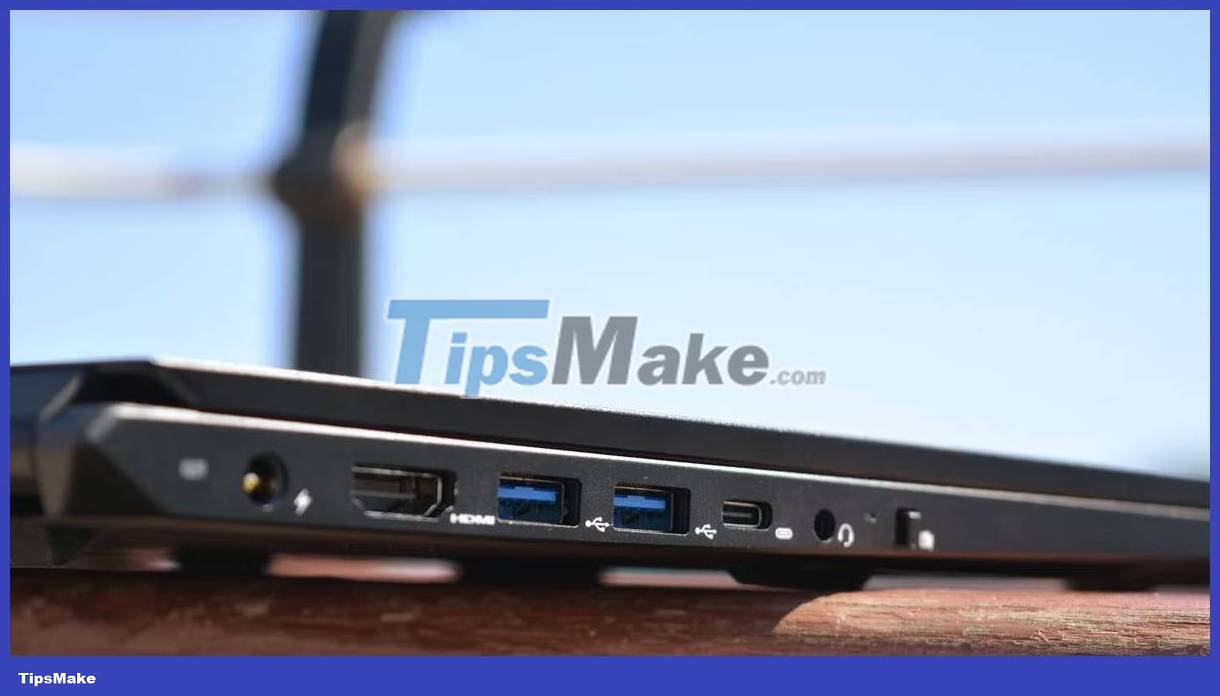
Check for damage on the USB's board
Last but not least, if you consider yourself proficient in repairing electronic devices, you can always open the USB and check the motherboard inside for any signs of damage. Of course, if the damage has reached this level, there's not much you can do. However, if the data on the drive is too important, you can get it back by replacing the faulty part itself or contacting data recovery services.
How to troubleshoot USB software
If the drive's hardware is fine, then software problems may be the cause of your inability to access your data.
Run an error check
Scans a damaged USB for logical problems that can help the operating system identify and fix the problem.
Windows
- Select your USB in Windows File Explorer, right-click it and select Properties .
- You will find a Check button to run an error check in the Tools tab .
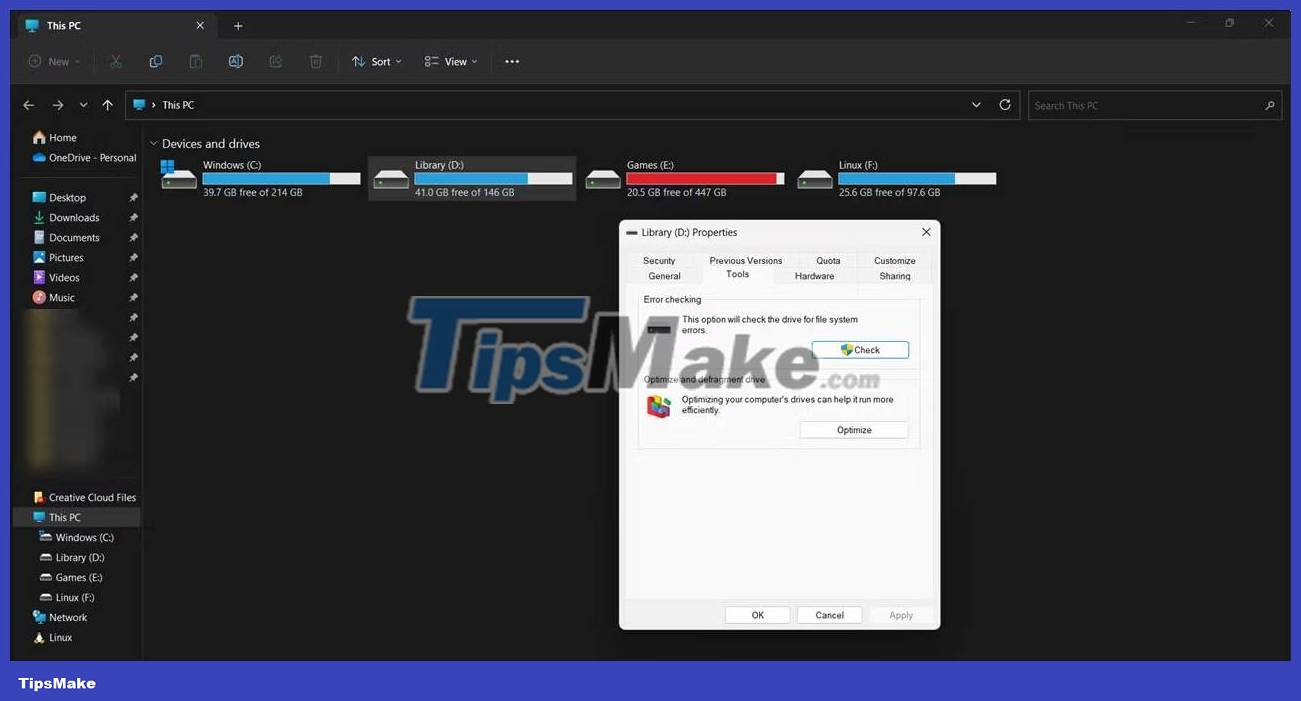
macOS
- Open Disk Utility. You can find this by going to Applications > Utilities > Disk Utility .
- When Disk Utility is open, you will see a list of drives on the left side of the window. Find and select USB from the list.
- Click First Aid at the top of the Disk Utility window.
- A dialog box will appear asking if you want to run First Aid on the selected drive. Click Run. Disk Utility will now try to find and fix any errors on your USB.
Linux
- Connect the USB to the computer and open Terminal. Type lsblk or sudo fdisk -l and press Enter.
- This will list all the drives currently connected to your computer. Identify your USB by its size, name or partition such as "/dev/sdb1".
- Before starting the repair process, you need to disconnect the drive. Type sudo umount /dev/sdb1 (replace "/dev/sdb1" with the drive's ID) and press Enter.
- Now you can run the fsck command to check and repair the USB. Type sudo fsck /dev/sdb1 (again, replace "/dev/sdb1" with the drive's ID) and press Enter.
Change drive letter
Sometimes, changing the drive letter can force Windows to read a drive that was previously unreadable.
1. Press Windows + R to open Run. Type diskmgmt.msc and press Enter.
2. Find your drive, right click on it and select Change Drive Letter and Path .
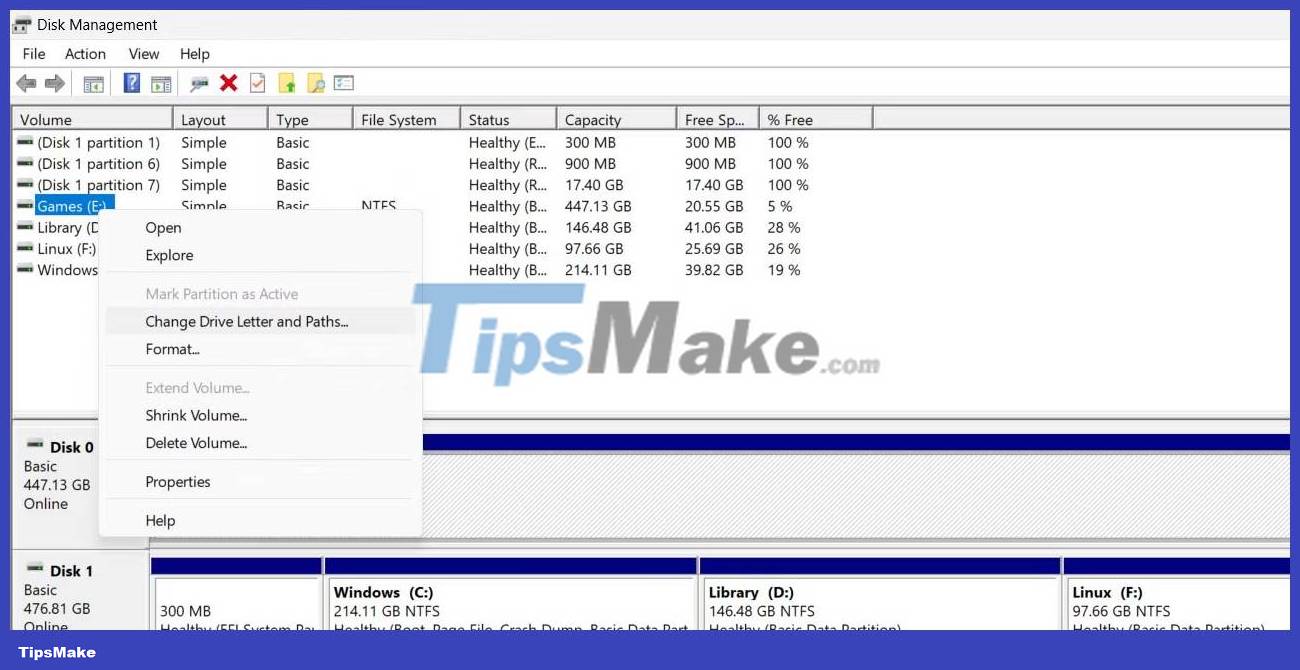
3. Click the Change button .
4. Select the desired drive letter from the drop-down list and click OK.
Check USB driver
Like any other piece of hardware on a PC, USB requires drivers to function properly. In case these drivers are missing, outdated or corrupted, you may have problems.
1. Right-click the Start menu button on the taskbar and click Device Manager .
2. In the drive, right click on the USB and select Update driver .
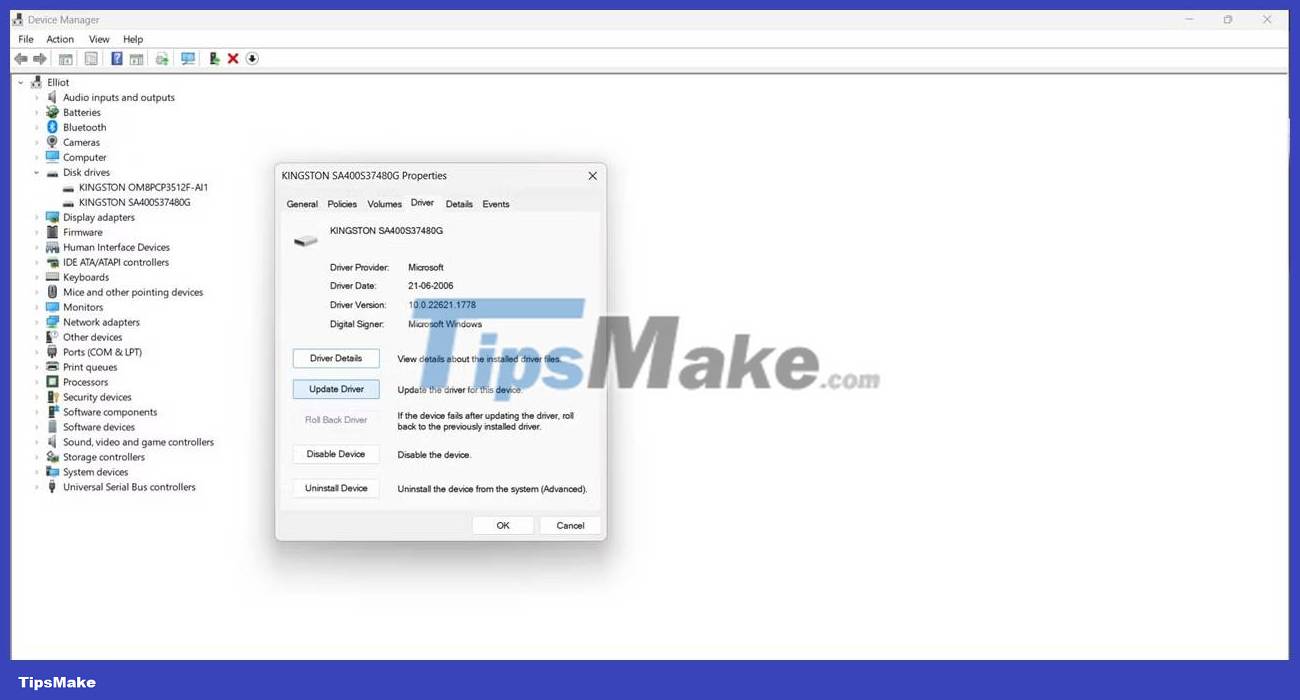
3. Click Search automatically for drivers and Windows will automatically find and install all relevant drivers.
Run the Windows hardware troubleshooter
The Windows Hardware Troubleshooter is useful for dealing with seemingly random hardware problems on your PC.
- Press Windows + R to open Run. Type cmd and press Enter.
- Type msdt.exe -id DeviceDiagnostic and press Enter. Let the troubleshooter run and try the suggested steps.
Use third-party data recovery software
Finally, third-party data recovery programs like EaseUS, Recuva, Disk Drill or Puran File Recovery are also good options. However, please note that they often require payment and may not be reliable due to USB damage or the integrity of stored data.
You should read it
- How to recover deleted iPhone data with PhoneRescue
- 5 Linux tools to recover data from damaged drives
- Tips for recovering selected data for iPhone
- How to recover deleted files on macOS
- Instructions to restore data after restoring iPhone
- Invite Any Data Recovery - software that helps recover lost data on a Mac, costing 56 USD, is free
 6 differences between Nothing Phone 1 and Nothing Phone 2
6 differences between Nothing Phone 1 and Nothing Phone 2 6 questions to ask before buying a new laptop
6 questions to ask before buying a new laptop The PC is compact and beautiful like a sports shoe
The PC is compact and beautiful like a sports shoe 7 ways to fix problems with microSD cards
7 ways to fix problems with microSD cards Learn about AMD's Ryzen Z1 and Z1 Extreme APUs
Learn about AMD's Ryzen Z1 and Z1 Extreme APUs Learn about E-Core and P-Core in Intel CPUs
Learn about E-Core and P-Core in Intel CPUs